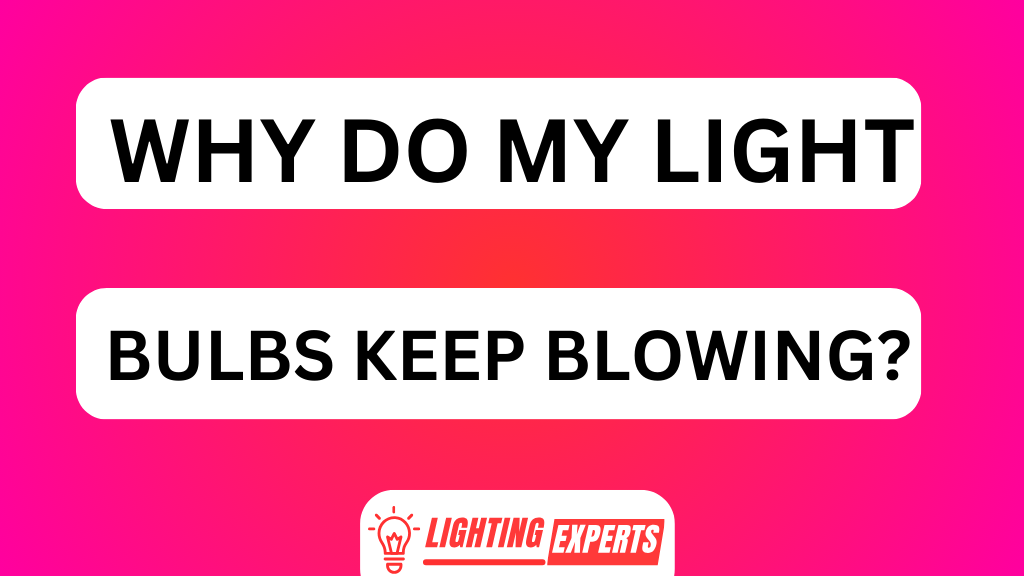In today’s fast-paced and competitive work environment, productivity is a key factor that determines success. One often overlooked element that can significantly impact productivity is lighting.
This article explores the ways in which lighting affects productivity and offers insights into choosing the right lighting solutions for increased efficiency.
Examining factors such as color temperature, natural light, task lighting, dimming controls, and placement strategies, this article provides practical guidance on how to optimize workplace illumination for different work environments.
Additionally, it highlights the benefits of upgrading lighting systems to create a more dynamic workspace.
Key Takeaways BOOST YOUR PRODUCTIVITY WITH RIGHT LIGHTING
- Lighting plays a crucial role in creating an environment that promotes productivity and enhances overall performance.
- Different colors have different psychological effects on individuals, influencing their mood, concentration, and alertness levels.
- Exposure to bright, natural light during the day helps maintain a healthy circadian rhythm, promoting wakefulness and alertness.
- Choosing the right color temperature, such as cool white light, can promote alertness and concentration in workspaces.
How Lighting Affects Productivity
The impact of lighting on productivity has been widely studied and documented in various academic research papers. Lighting plays a crucial role in creating an environment that promotes productivity and enhances overall performance. One aspect of lighting that affects productivity is color psychology. Different colors have different psychological effects on individuals, influencing their mood, concentration, and alertness levels. For example, cool colors like blue and green are known to promote focus and calmness, while warm colors like red and orange can evoke feelings of energy and creativity.

Another important factor related to lighting and productivity is the influence on our circadian rhythm. Our circadian rhythm regulates our sleep-wake cycle and is sensitive to light exposure. Exposure to bright, natural light during the day helps maintain a healthy circadian rhythm, promoting wakefulness and alertness. On the other hand, exposure to dim or artificial light in the evening can disrupt this rhythm, leading to difficulties falling asleep or feeling drowsy during work hours.
Understanding these aspects of lighting can help create optimal work environments that support productivity by utilizing appropriate color schemes and ensuring adequate exposure to natural light throughout the day.
Types of Lighting for Increased Efficiency
Different types of lighting can significantly improve efficiency in various settings. When it comes to increased productivity, choosing the right lighting is crucial. Here are some types of lighting that can enhance efficiency and lighting efficiency:

- Natural Lighting:
- Provides a sense of well-being
- Increases alertness and focus
- Task Lighting:
- Illuminates specific work areas
- Reduces eye strain and fatigue
- LED Lighting:
- Energy-efficient option
- Provides bright and focused light
Effective lighting design can positively impact productivity by creating a comfortable and well-lit environment. It not only improves visibility but also influences mood, motivation, and concentration levels. By optimizing lighting conditions, individuals can work efficiently and effectively.
Now let’s explore the importance of choosing the right color temperature in the next section.
Choosing the Right Color Temperature
Choosing the appropriate color temperature is an essential factor in creating optimal lighting conditions. Color temperature refers to the perceived warmth or coolness of light, measured in Kelvin (K). Different color temperatures have distinct effects on individuals and can impact their psychological well-being.

Warm white light with a lower color temperature (2700-3000K) creates a cozy and relaxing atmosphere, which can be beneficial for relaxation and unwinding. On the other hand, cool white light with a higher color temperature (4000-6500K) promotes alertness and concentration, making it more suitable for workspaces. Research has shown that exposure to cooler light temperatures during working hours improves focus and productivity levels.
Therefore, selecting the right color temperature is crucial in creating an environment that supports optimal performance and well-being. Understanding the effects of color temperature leads us to explore the impact of natural light on work performance.
The Impact of Natural Light on Work Performance
Research has indicated that exposure to natural light in the workplace can positively influence employees’ cognitive performance and overall well-being. Natural light benefits not only physical health but also mental and emotional well-being, leading to increased productivity. The impact of natural lighting on work performance is significant and should be considered when designing office spaces.

Benefits of natural light include:
- Improved mood and mental health:
- Natural light stimulates the production of serotonin, a hormone that regulates mood and promotes feelings of happiness.
- Exposure to natural light reduces symptoms of depression and anxiety, resulting in improved mental well-being.
- Enhanced cognitive function:
- Natural lighting improves concentration, alertness, and problem-solving abilities.
- It enhances visual acuity, reducing eye strain and fatigue commonly associated with artificial lighting.
Incorporating ample access to natural light in the workplace can create a positive environment that fosters employee engagement, creativity, and overall productivity.
Task Lighting: Optimizing Your Workspace
Task lighting is a crucial aspect of workspace optimization, as it ensures adequate illumination for specific tasks and promotes optimal visual conditions. Effective task lighting plays a vital role in enhancing productivity and reducing eye strain.
Workspace organization should be considered when implementing task lighting, as it allows for the placement of lights in areas where they are most needed. Ergonomic lighting is an important consideration when designing task lighting for workspaces, as it focuses on providing the right amount and quality of light to minimize glare and shadows.
This type of lighting takes into account factors such as color temperature, brightness levels, and beam angles to create a comfortable and efficient working environment. By incorporating proper task lighting into workspace organization, individuals can optimize their performance by having the right illumination for their specific tasks.
Dimming and Brightness Controls: Finding the Balance
This discussion will focus on the importance of optimal lighting levels, adjusting for comfort, and enhancing focus and concentration in a workspace.
Optimal lighting levels are crucial as they can impact productivity and overall well-being.
Adjusting lighting for comfort involves finding the right balance between brightness and dimness to create a pleasant working environment.
Enhancing focus and concentration requires strategic use of lighting techniques such as task lighting or natural light sources.
Optimal Lighting Levels
The recommended lighting levels for optimal productivity in a workspace vary depending on the specific task being performed. Lighting ambiance and intensity play a crucial role in creating an environment that promotes focus and efficiency.
Factors to consider when determining lighting ambiance:
- Natural vs. artificial lighting: Natural light has been shown to enhance mood and alertness, while artificial lighting can be adjusted to suit specific needs.
- Color temperature: Cool white light (5000K-6500K) is ideal for tasks requiring high concentration, while warm white light (2700K-3000K) creates a more relaxed atmosphere.
Factors to consider when determining lighting intensity:
- Task requirements: Tasks that involve fine details or reading small text require higher intensity lighting compared to general activities.
- Personal preferences: Some individuals may prefer brighter or dimmer lighting levels based on their comfort and visual acuity.
Adjusting for Comfort
To ensure optimal comfort in a workspace, adjustments can be made to the lighting ambiance and intensity based on individual preferences and visual needs.
Adjusting for ergonomics involves creating personalized lighting settings that promote comfort and enhance productivity. Ergonomic lighting considers factors such as glare, contrast, color temperature, and brightness levels to minimize eye strain and fatigue.
By customizing the lighting environment to suit specific tasks and individual requirements, employees can experience improved concentration, reduced errors, and increased job satisfaction. Personalized lighting settings enable individuals to control their work environment according to their own preferences, promoting a sense of autonomy and well-being.
Additionally, adjustable lighting systems allow for flexibility in accommodating different work activities throughout the day or depending on personal preference.
Overall, adjusting for ergonomics through personalized lighting settings contributes to a more comfortable and productive workspace.
Enhancing Focus and Concentration
Enhancing focus and concentration can be achieved by optimizing lighting conditions in a workspace. Proper lighting not only improves visual comfort but also has a significant impact on cognitive performance. To improve attention span and increase productivity, consider the following:
- Natural Lighting
- Utilize natural light sources whenever possible to provide a more stimulating and dynamic environment.
- Position workstations near windows to maximize the exposure to daylight.
- Task Lighting
- Incorporate task lighting that provides focused illumination for specific activities.
- Use adjustable desk lamps or under-cabinet lights to direct light precisely where it is needed.
By optimizing lighting conditions in the workspace, you can create an environment that promotes better focus and concentration.
Natural lighting helps regulate circadian rhythms and positively affects mood, while task lighting ensures adequate illumination for tasks at hand. These strategies contribute towards improving attention span and ultimately increasing productivity.
Lighting Placement: Maximizing Illumination
This discussion will focus on optimal lighting positions and how they can enhance workspace brightness.
Optimal lighting positions refer to the strategic placement of light sources in a workspace to maximize illumination and reduce shadows.
Optimal Lighting Positions
Proper placement of lighting fixtures is crucial in achieving optimal lighting positions for maximized productivity. By strategically positioning lighting fixtures, individuals can create a well-lit environment that enhances concentration and reduces eye strain.
To ensure the desired lighting angles, there are several factors to consider:
- Fixture Height: The height at which the fixture is installed affects the distribution of light. Lower fixtures provide more direct illumination, while higher fixtures create a softer, diffused light.
- Fixture Direction: The directionality of the light emitted from the fixture plays a significant role in illuminating workspaces effectively. Adjustable fixtures allow users to direct light precisely where it is needed.
Considering these aspects when positioning lighting fixtures ensures that adequate and appropriate illumination is achieved, minimizing shadows and glare while maximizing visual comfort and productivity.
Additionally, incorporating adjustable fixtures allows for flexibility in adapting to varying tasks and preferences.
Enhancing Workspace Brightness
The level of brightness in a workspace is a critical factor that significantly impacts visual comfort and task performance. Adequate lighting conditions contribute to reducing eye strain and improving overall productivity. Workspace ergonomics involve creating an environment that promotes efficient work processes while ensuring the well-being of employees. One aspect of workspace ergonomics is optimizing the brightness levels to minimize eye fatigue and discomfort. Studies have shown that insufficient lighting can lead to decreased concentration, increased errors, and even higher stress levels among workers.
To create an ideal lighting setup, it is crucial to consider both natural and artificial light sources. Natural daylight should be maximized by positioning workstations near windows without causing glare or excessive contrast on computer screens. Artificial lighting should provide sufficient illumination for tasks without causing harsh shadows or reflections.
The following table presents different types of lighting fixtures commonly used in workspaces:
| Lighting Fixture | Advantages | Disadvantages |
|---|---|---|
| Incandescent | Warm color temperature; Low initial cost | High energy consumption; Short lifespan |
| Fluorescent | Energy-efficient; Long lifespan | Flickering issues; Contains mercury |
| LED | Energy-efficient; Long lifespan | Initial cost may be high |
| Halogen | Bright white light; Accurate color rendering | High energy consumption; Generates heat |
Lighting Design for Different Work Environments
to provide control over lighting preferences
Overall, effective lighting design in different work environments plays a crucial role in enhancing productivity by providing optimal visual conditions and creating an inviting atmosphere for employees to thrive in.
Lighting Upgrades for a More Dynamic Workspace
Implementing lighting upgrades in the workspace can result in a more engaging and visually stimulating environment. With the continuous advancements in lighting technology, organizations now have access to a wide range of options to enhance their workspaces. These upgrades not only improve visibility but also contribute to creating a soothing ambiance that can positively impact employee well-being and productivity.
One significant advancement in lighting technology is the use of LED lights. LED lights are energy-efficient, long-lasting, and provide better control over brightness levels and color temperature. This allows organizations to customize their lighting according to specific tasks or preferences, promoting focus and reducing eye strain.
Additionally, smart lighting systems are becoming increasingly popular due to their ability to adapt to changing natural light conditions throughout the day. These systems can automatically adjust brightness levels and color temperatures, mimicking natural daylight patterns. This dynamic lighting setup helps regulate circadian rhythms and enhances alertness during working hours.
Frequently Asked Questions
What Are the Negative Effects of Poor Lighting on Productivity?
The negative effects of poor lighting on productivity include decreased motivation and eye strain. Additionally, inadequate lighting can impact mood and energy levels, further affecting overall productivity levels in a work environment.
How Can Lighting Improve Concentration and Focus?
Lighting techniques play a crucial role in improving concentration and focus. Natural light, in particular, offers numerous benefits such as reducing eye strain, increasing alertness, and regulating circadian rhythms, all of which contribute to enhanced productivity.
Are There Specific Color Temperatures That Are More Suitable for Certain Types of Tasks?
Color temperature can have an impact on task performance. Certain color temperatures may be more suitable for specific tasks, as they can affect alertness, focus, and productivity. Optimal lighting levels should be considered to enhance work efficiency.
Can Natural Light Alone Be Enough to Enhance Productivity in a Workspace?
Maximizing natural light in a workspace can have benefits for productivity. However, whether natural light alone is enough to enhance productivity depends on various factors such as the intensity and direction of the light, as well as individual preferences and tasks being performed.
What Are the Key Factors to Consider When Designing the Lighting for an Open Office Layout?
When designing the lighting for an open office layout, key factors to consider include brightness levels, color temperature, and light distribution. These factors contribute to creating a well-lit environment that promotes productivity and comfort for employees.
Conclusion
In conclusion, it is evident that lighting plays a crucial role in enhancing productivity in the workplace. By understanding the various types of lighting and their impact on efficiency, individuals can create a more dynamic workspace.
The right color temperature, combined with the benefits of natural light and task lighting, can optimize work performance. Additionally, dimming and brightness controls allow for finding the perfect balance of illumination. Strategic placement of lighting fixtures further maximizes productivity levels.
Overall, investing in lighting upgrades can transform a dull workspace into a vibrant and inspiring environment where productivity thrives.




